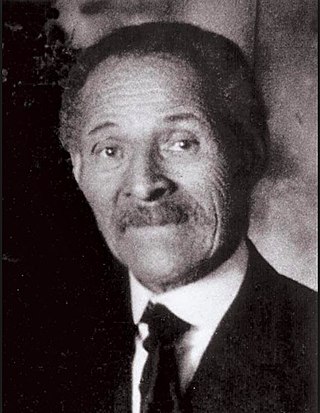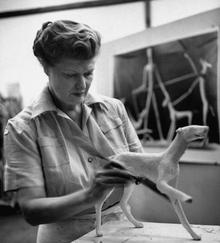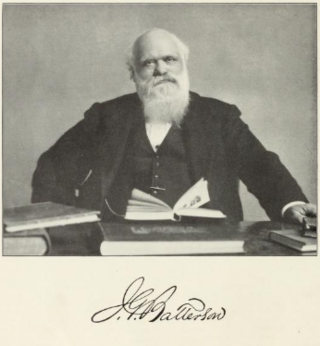
Ithiel Town was an American architect and civil engineer. One of the first generation of professional architects in the United States, Town made significant contributions to American architecture in the first half of the 19th century. His work, in the Federal and revivalist Greek and Gothic revival architectural styles, was influential and widely copied.

The Hudson River School was a mid-19th-century American art movement embodied by a group of landscape painters whose aesthetic vision was influenced by Romanticism. Early on, the paintings typically depicted the Hudson River Valley and the surrounding area, including the Catskill, Adirondack, and White Mountains.

Thomas Cole was an English-born American artist and the founder of the Hudson River School art movement. Cole is widely regarded as the first significant American landscape painter. He was known for his romantic landscape and history paintings. Influenced by European painters, but with a strong American sensibility, he was prolific throughout his career and worked primarily with oil on canvas. His paintings are typically allegoric and often depict small figures or structures set against moody and evocative natural landscapes. They are usually escapist, framing the New World as a natural eden contrasting with the smog-filled cityscapes of Industrial Revolution-era Britain, in which he grew up. His works, often seen as conservative, criticize the contemporary trends of industrialism, urbanism, and westward expansion.

The Wadsworth Atheneum is an art museum in Hartford, Connecticut. The Wadsworth is noted for its collections of European Baroque art, ancient Egyptian and Classical bronzes, French and American Impressionist paintings, Hudson River School landscapes, modernist masterpieces and contemporary works, as well as collections of early American furniture and decorative arts.

Charles Ethan Porter was an American painter who specialized in still life painting. A student at the National Academy of Design in New York City, he was one of the first African Americans to exhibit there. He was the only African-American artist at the turn of that century who painted in still life and the first known professional Black artist to concentrate on still life.

Randolph Rogers was an American Neoclassical sculptor. An expatriate who lived most of his life in Italy, his works ranged from popular subjects to major commissions, including the Columbus Doors at the U.S. Capitol and American Civil War monuments.
Philip Grausman is an American sculptor, known for his portrait works.
Arthur Everett "Chick" Austin Jr. was the director of the Wadsworth Atheneum from 1927 through 1944. Austin persisted in the introduction of then-modern theater and modern design and especially contemporaneous art. Salvador Dalí, Alexander Calder, and Gertrude Stein benefited from his advocacy.
Chick Austin helped alter the way Americans looked at and thought about modern art. For starters, he organized the first Picasso retrospective in the United States, put on the first show of Surrealist art and, with Kirstein, helped engineer the immigration of choreographer George Balanchine and sow the seeds for Balanchine's School of American Ballet.
Edward Avedisian was an American abstract painter who came into prominence during the 1960s. His work was initially associated with Color field painting and in the late 1960s with Lyrical Abstraction.

Mary Callery was an American artist known for her Modern and Abstract Expressionist sculpture. She was part of the New York School art movement of the 1940s, 1950s and 1960s.

Ancient Rome is a trio of almost identical paintings by Italian artist Giovanni Paolo Panini, produced as pendant paintings to Modern Rome for his patron, the comte de Stainville, in the 1750s.

James Goodwin Batterson was an American designer and builder, the owner of New England Granite Works from 1845 and a founder in 1863 of Travelers Insurance Company, both in Hartford, Connecticut. He introduced casualty insurance in the United States, for which he was posthumously inducted into the Insurance Hall of Fame (1965).

Allen Butler Talcott was an American landscape painter. After studying art in Paris for three years at Académie Julian, he returned to the United States, becoming one of the first members of the Old Lyme Art Colony in Connecticut. His paintings, usually landscapes depicting the local scenery and often executed en plein air, were generally Barbizon and Tonalist, sometimes incorporating elements of Impressionism. He was especially known and respected for his paintings of trees. After eight summers at Old Lyme, he died there at the age of 41.

Emil Fuchs was an Austrian–American sculptor, medallist, painter, and author who worked in Vienna, London and New York. He painted portraits of Queen Victoria and Edward VII and was fashionable among London high society in the early 20th century.

Mary Rogers Williams was an American tonalist and Impressionist artist known for pastel and oil portraits and landscapes. She was second in command of Smith College's art department from 1888 to 1906 under Dwight William Tryon and earned acclaim for paintings of her native New England and scenes from her wide travels in Europe, from Norway to the Paestum ruins south of Naples. She often depicted high horizons, whether in meadows or medieval hill towns, under ribbons of sky.

Elizabeth Jarvis Colt was the widow and heir of firearms manufacturer Samuel Colt, founder of Colt's Manufacturing Company.

The Hartford Times Building is an architecturally significant, early 20th-century Beaux-Arts style building in downtown Hartford, Connecticut, completed in 1920 as the headquarters of the now defunct Hartford Times. The newspaper commissioned architect Donn Barber, who had designed the nearby Travelers Tower and Connecticut State Library and Supreme Court Building, to design a new structure to house its office and newspaper plant. At the time the paper was at the height of its influence with the top circulation in the state in 1917.
Emily Mae Smith is a visual artist from Austin, Texas. Her sly, humorous, and riveting compositions nod to art historical movements such as Greek Mythology and Surrealism through with a distinctly 21st century spin. Her genre-defying paintings speak through a vocabulary of signs and symbols addressing timely subjects including gender, class, and violence. Smith’s paintings tackle art history’s phallocentric myths and create imagery for subjectivities absent in visual culture, specifically the feminist perspective.

The Lady of Shalott is an oil painting by the English artist William Holman Hunt, made c. 1888–1905, and depicting a scene from Tennyson's 1833 poem, "The Lady of Shalott". The painting is held by the Wadsworth Atheneum, in Hartford, Connecticut. A smaller version is held by the Manchester Art Gallery.

Dr. Horace Wells, also known as the Horace Wells Monument, is a monumental statue in Hartford, Connecticut, United States. The statue, located in the city's Bushnell Park, was designed by sculptor Truman Howe Bartlett and dedicated in 1875 in honor of Horace Wells, a dentist who was a pioneer in the use of anesthesia.
















